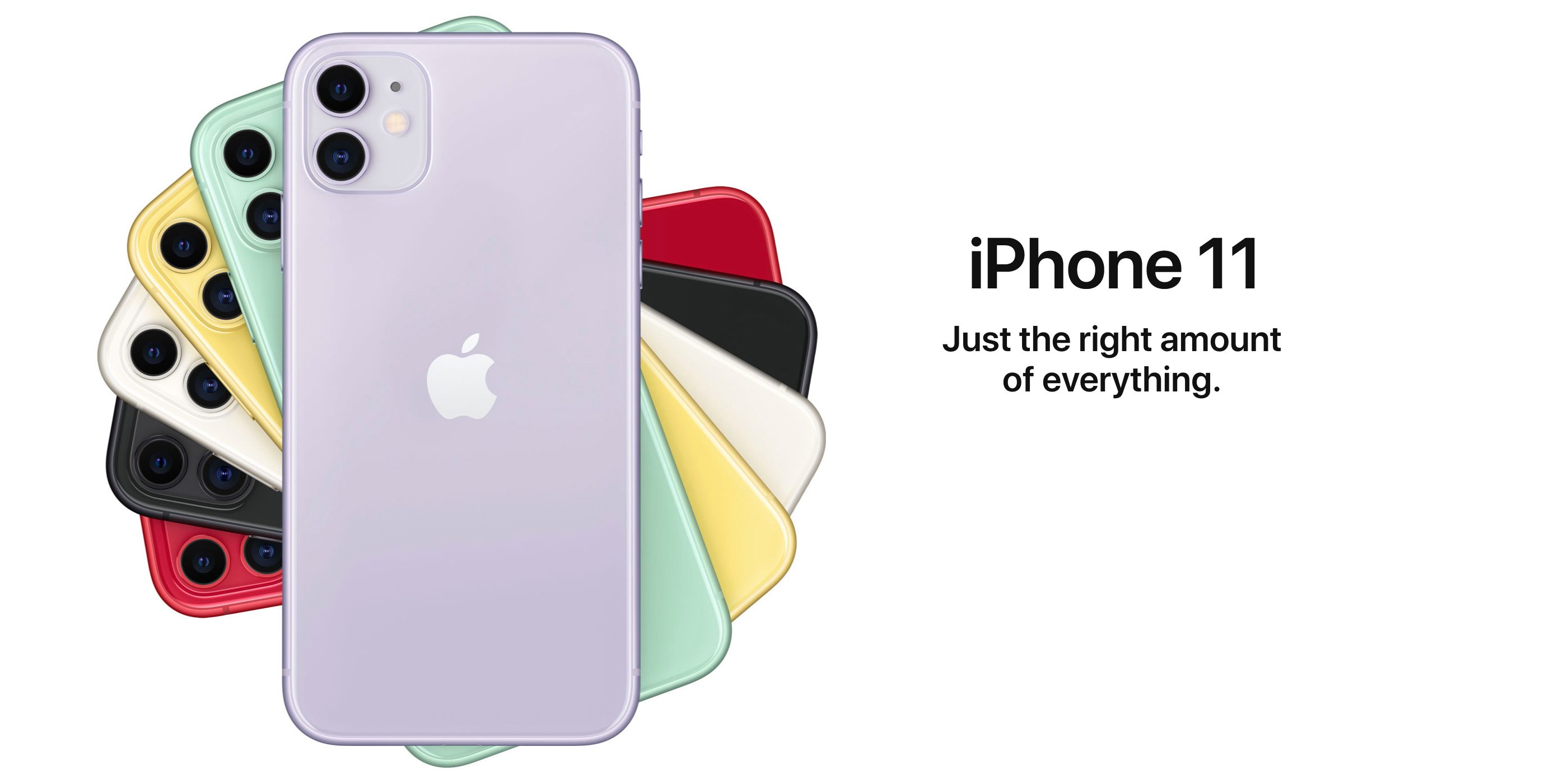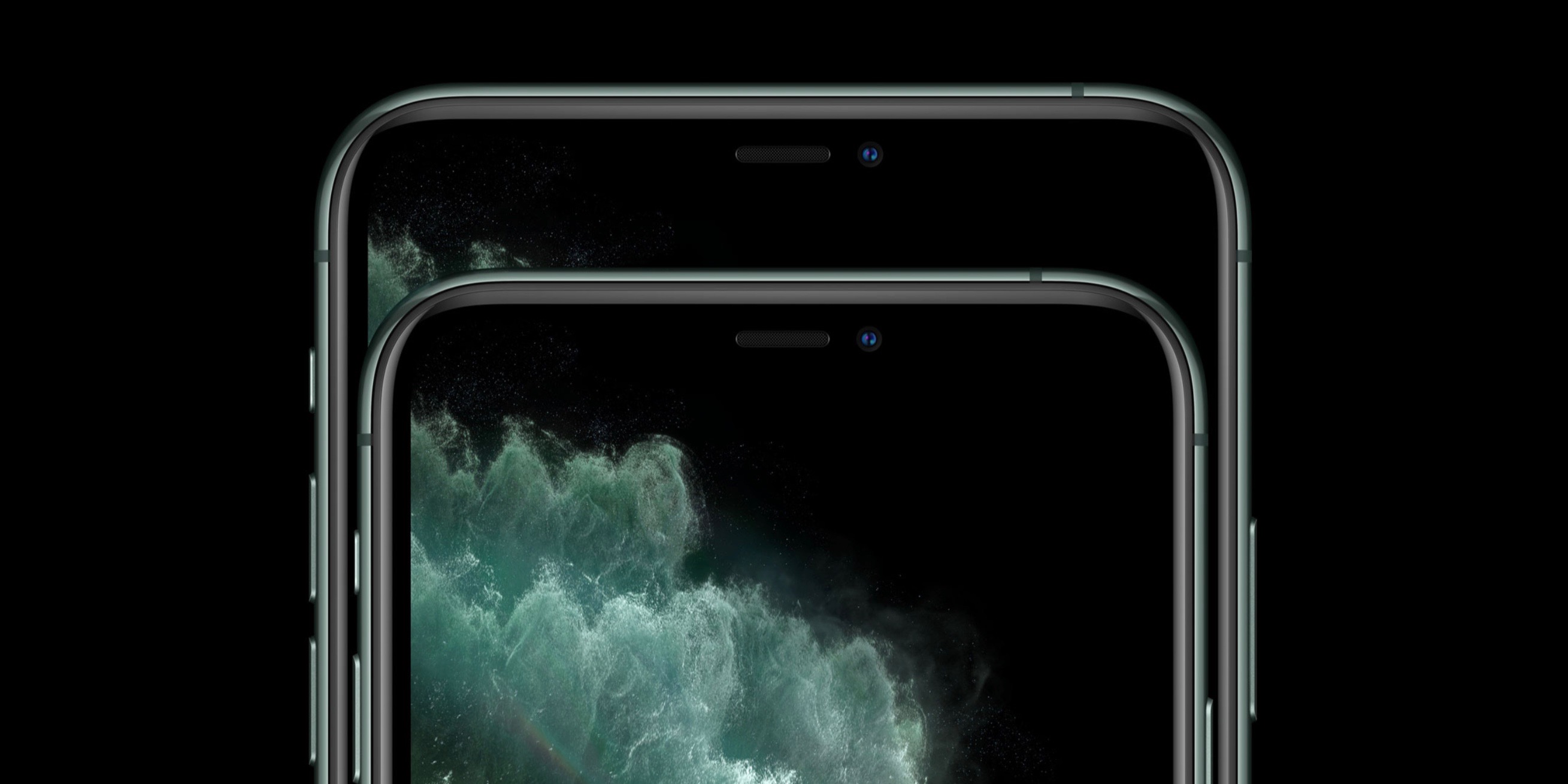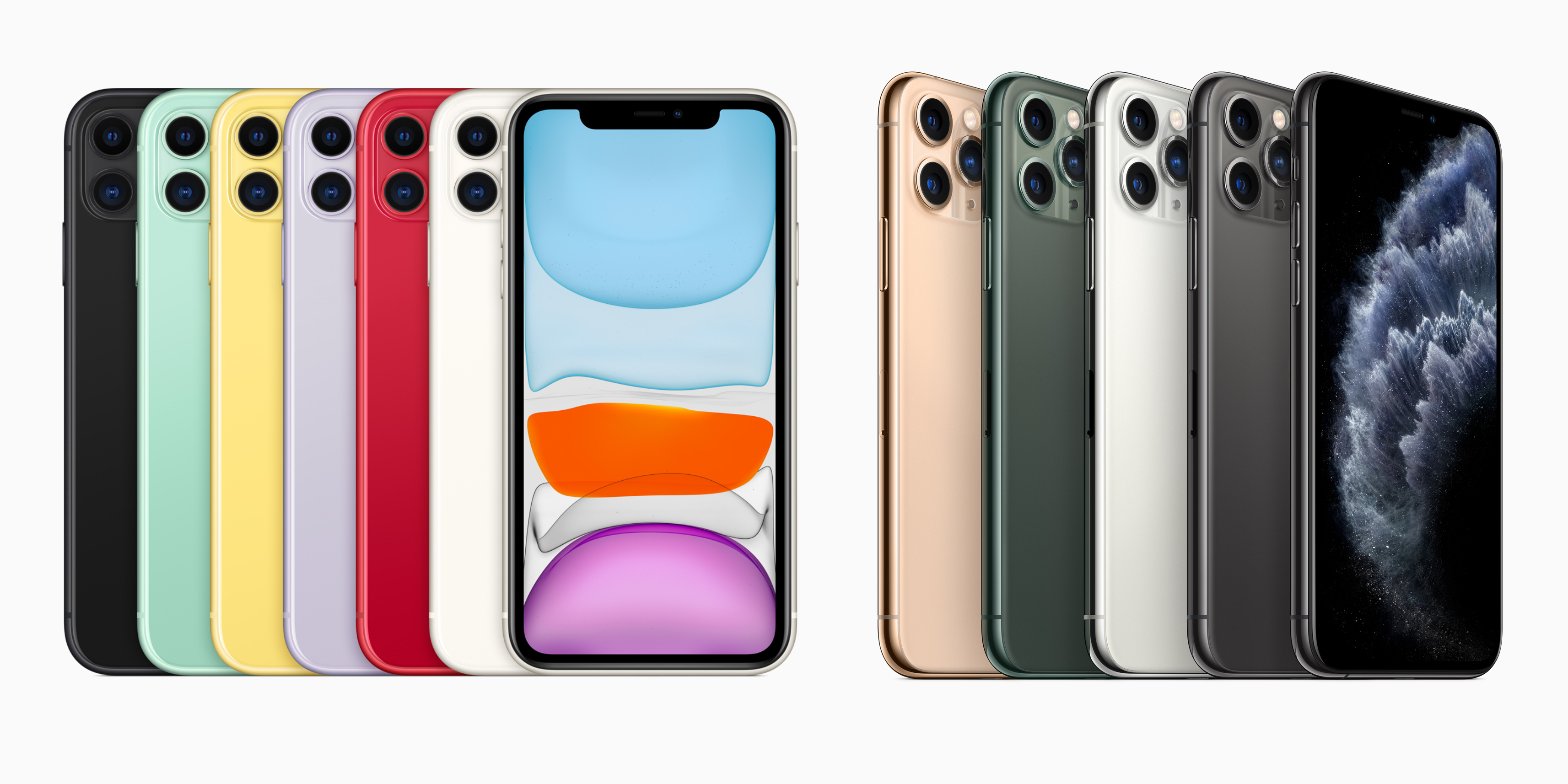
Last week, we broke down all of the differences between the iPhone XR and iPhone 11 – explaining that for many people, the iPhone XR is still an excellent choice. What about the iPhone 11 vs iPhone 11 Pro? Read on as we detail all of the differences.
iPhone 11
The iPhone 11 is the successor to the iPhone XR introduced last year. The iPhone XR sticks around in the iPhone lineup at the price of $599, whereas the iPhone 11 starts at $699 and the iPhone 11 Pro starts at $999.
One of the biggest differences between the iPhone 11 and the iPhone 11 Pro is the display. The iPhone 11 features an LCD “Liquid Retina” panel with a 1792×828 resolution. That comes out to for 326 pixels-per-inch. This is notably lower than the resolutions of 458 pixels-per-inch found on the iPhone 11 Pro and iPhone 11 Pro Max, but it’s still a fantastic screen overall.
In terms of design, the iPhone 11 looks similar to the iPhone 11 Pro, but you will notice slightly larger bezels due to the LCD panel compared to the OLED of the iPhone 11 Pro. This shouldn’t be too noticeable if you’re coming from an iPhone XR or earlier.
The iPhone 11 lacks support for 3D Touch, but so does the iPhone 11 Pro. Apple has instead shifted its focus entirely to Haptic Touch across the board, closing one of the gaps that existed last year between the iPhone XS and iPhone XR.
As far as camera technology goes, the iPhone 11 features a dual-camera setup with two 12MP Ultra Wide and Wide cameras. This means the iPhone 11 offers 2x optical zoom out as well as something called “Night mode” for improved low-light performance.
Meanwhile, the front-facing camera has been upgraded to 12MP and now supports 4K video recording at 24 fps, 30 fps, or 60 fps. There’s also support for slo-mo 1080p video at 120 fps. Apple also says the iPhone 11 supports Dolby Atmos for audio playback.
The iPhone 11 is powered by Apple’s A13 Bionic processor as well as a new third-generation Neural Engine. The new Neural Engine enables new camera features including improved Smart HDR performance as well as something called Deep Fusion. Deep Fusion will come later this fall and uses “advanced machine learning to do pixel-by-pixel processing of photos, optimizing for texture, details, and noise in every part of the photo,” according to Apple.
Furthermore, the A13 Bionic processor ensures that the iPhone 11 will be capable of receiving software updates from Apple for many years to come.
Apple’s technical specifications page indicates 17 hours of video playback, 10 hours of streaming video, and 65 hours of audio playback for the iPhone 11. It is capable of fast charging and can add 50% in 30 minutes, but the 18W fast charger is not included in the box.
iPhone 11 Pro and iPhone 11 Pro Max
The iPhone 11 Pro and iPhone 11 Pro Max are the followups to the iPhone XS and iPhone XS Max. The iPhone 11 Pro measures in at 5.8-inches, where as the iPhone 11 Pro Max comes in at 6.5-inches.
The iPhone 11 Pro line uses OLED display technology, which means you get improved colors and deeper blacks. The display of the iPhone 11 Pro is 2436×1125, while the iPhone 11 Pro Max is 2688×1242. This comes out to 458 pixels-per-inch in both sizes.
Apple also says the iPhone 11 Pro lineup features a wider dynamic range display called Super Retina XDR, which should further improve color reproduction. The iPhone 11 Pro also features a new 800 nits max brightness (typical); 1200 nits max brightness (HDR) display. This compares to the 625 nits max brightness (typical) display of the iPhone 11.
As mentioned earlier, the design of the iPhone 11 Pro is similar to the iPhone 11, but with a few key differences. For one, the iPhone 11 Pro features a new matte back glass design. Furthermore, the display stretches ever-so-slightly closer to the borders, while the edges are made out of stainless steel as opposed to aluminum.
The biggest differentiator between the iPhone 11 and the iPhone 11 Pro is the camera technology. Apple has added an ultra-wide lens on both the iPhone 11 Pro and the iPhone 11 Pro Max, which is shown in the Camera app as a 0.5x button. You can zoom out to see more and take wider shots, from 0.5x to 2x. The ultra-wide has an f/2.4 aperture with a 120-degree field of view. The iPhone 11 Pro also features the same “Deep Fusion” technology as the iPhone 11, as well as the same upgraded front-facing camera.
The iPhone 11 Pro and iPhone 11 Pro Max feature the same A13 Bionic processor as the iPhone 11, and offer stellar improvements in battery life. The iPhone 11 Pro offers up to four hours longer battery life than the iPhone XS. That means you get up to 18 hours of video playback, 11 hours of streaming, and 65 hours of audio playback.
Meanwhile, the iPhone 11 Pro Max offers five hours of additional battery life compared to the iPhone XS Max. That gets you 20 hours of video playback, 12 hours of video streaming, and eight hours of audio playback.
Both the iPhone 11 and iPhone 11 Pro include 802.11ax WiFi, WiFi 6, and Gigabit-class LTE.
With these higher-end features comes a higher price tag. The iPhone 11 Pro starts at $999 for 64GB of storage, with the 256GB model coming in at $1,149. You can upgrade to 512GB for $1,349. The iPhone 11 Pro Max starts at $1,099 for 64GB, $1,249 for 256GB, and $1,449 for 512GB.
The iPhone 11 Pro and iPhone 11 Pro Max are available in space gray, silver, gold, and an all-new midnight green. They are capable of fast charging, and are the first iPhones ever to include an Apple 18W charger and Lightning to USB-C cable in the box.
iPhone 11 vs iPhone 11 Pro: Which should you buy?
For many people, the iPhone 11 is an excellent smartphone, even in comparison to some of the more powerful features of the iPhone 11 Pro. While you miss out on the triple-lens camera setup, you still get the ultra-powerful A13 Bionic processor as well as features like Portrait mode and Smart HDR.
The iPhone 11 is also made even better by the $50 price drop it received in comparison to last year’s iPhone XR. At $699, it’s far more appealing than the $999 or $1099 introductory prices for the iPhone 11 Pro and iPhone 11 Pro Max.
Again, the higher-end price of the iPhone 11 Pro doesn’t come without higher-end features. For instance, you get the triple-lens camera setup, the improved display, the more premium design, and more. It’s ultimately up to you to decide whether or not those features are worth the added $300+ in price, but for most people, the iPhone 11 will certainly suffice.
If you want the biggest iPhone possible, whether it be in terms of storage size or screen size, the iPhone 11 Pro Max is your best choice. On the other hand, if you want the smallest screen size, the iPhone 11 Pro is the best choice at 5.8-inches. If you want the widest color selection possible, then the iPhone 11 is your best bet.
What do you think of the iPhone 11 vs iPhone 11 Pro argument? Which do you prefer? Let us know down in the comments.
Author: Chance Miller
Source: 9TO5Mac







